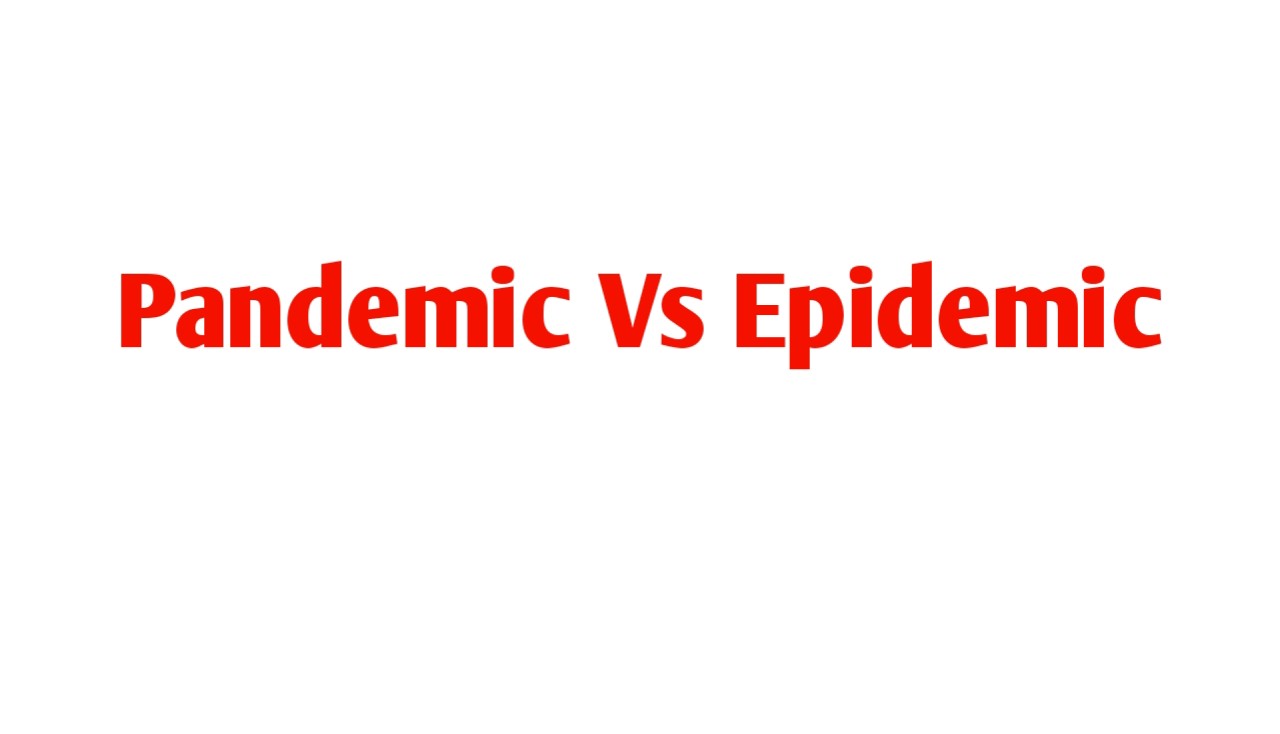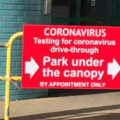World Health Organization (WHO) is the directing and coordinating authority for health within the United Nations system, responsible for providing leadership on global health matters, shaping the health research agenda, setting norms and standards, articulating evidence-based policy options, providing technical support to countries and monitoring and assessing health trends. WHO is the clearing house for acceptable definitions of health terminologies .Not all infectious disease terms are created equal, though often they’re mistakenly used interchangeably. Following the outbreak of coronavirus disease, the importance of clearly outlining the distinction between the words “pandemic,” “epidemic,” and “endemic” became a global necessity. This is because the definition of each term is fluid and changes as diseases become more or less prevalent over time.
While conversational use of these words might not require precise definitions, knowing the difference is important to help you better understand public health news and appropriate public health responses.
Definitions
Epidemic: According to WHO refers to the occurrence in a community or region of cases of an illness, specific health-related behavior, or other health-related events clearly in excess of normal expectancy. The community or region and the period in which the cases occur are specified precisely. The number of cases indicating the presence of an epidemic varies according to the agent, size, and type of population exposed, previous experience or lack of exposure to the disease, and time and place of occurrence.
Epidemic threshold Is the critical number or density of susceptible hosts required for an epidemic to occur. The epidemic threshold is used to confirm the emergence of an epidemic so as to step-up appropriate control measures.
Pandemic: According to the World Health Organization a pandemic is defined as “an epidemic occurring worldwide, or over a very wide area, crossing international boundaries and usually affecting a large number of people”. The classical definition includes nothing about population immunity, virology or disease severity. SEE: List of Worst Pandemics In History
Disease Outbreak: A disease outbreak happens when a disease occurs in greater numbers than expected in a community or region or during a season. An outbreak may occur in one community or even extend to several countries. It can last from days to years. Sometimes a single case of a contagious disease is considered an outbreak. This may be true if it is an unknown disease, is new to a community, or has been absent from a population for a long time.
Epidemic vs. Endemic
But what’s the difference between epidemic and endemic? An epidemic is actively spreading; new cases of the disease substantially exceed what is expected. More broadly, it’s used to describe any problem that’s out of control, such as “the opioid epidemic.” An epidemic is often localized to a region, but the number of those infected in that region is significantly higher than normal. For example, when COVID-19 was limited to Wuhan, China, it was an epidemic. The geographical spread turned it into a pandemic. Endemics, on the other hand, are a constant presence in a specific location. Malaria is endemic to parts of Africa. Ice is endemic to Antarctica.
Endemic vs. Outbreak
Going one step farther, an endemic can lead to an outbreak, and an outbreak can happen anywhere. Last summer’s dengue fever outbreak in Hawaii is as an example. Dengue fever is endemic to certain regions of Africa, Central and South America, and the Caribbean. Mosquitoes in these areas carry dengue fever and transmit it from person to person. But in 2019 there was an outbreak of dengue fever in Hawaii, where the disease is not endemic. It’s believed an infected person visited the Big Island and was bitten by mosquitoes there. The insects then transferred the disease to other individuals they bit, which created an outbreak.
You can see why it’s so easy to confuse these terms. They’re all related to one another and there’s a natural ebb and flow between them as treatments become available and measures for control are put in place or as flare-ups occur and disease begins to spread.
Controversy over the declaration of Coronavirus disease as a pandemic
WHO’s declaration that the global spread of coronavirus disease 2019 (COVID-19) is a pandemic contributed greatly to clearing up confusion in the terminology in the professional literature and the media. Discussions on when wide geographical spread of a disease becomes a pandemic tend to recur when the world is confronted with an emerging infectious disease.
The debate around the terminology used for COVID-19 raises two important questions. The first question is why there was reluctance to call the COVID-19 outbreak a pandemic, and the second question is whether the terminology is of any practical importance.
In almost all good textbooks, an epidemic becomes a pandemic when there is widespread geographical distribution of the disease. For some weeks, the COVID-19 epidemic, which had spread to over 100 countries, seemed to fit the classical definition of a pandemic. One could reasonably ask whether the use of the term pandemic would change any of the actions necessary to control the spread of the virus.
There are several situations in which it could be helpful to use well defined terminology to control the spread of an infectious disease. The resources for controlling a pandemic are both different, substantially larger, and generally much more far-reaching than for a localised outbreak or epidemic. Thus the terms used for the different situations could be restricted according to the control measures that are necessary.
Perhaps unique to pandemics, these include considerable international coordination and collaboration in providing aid to affected countries, recruiting the necessary resources for promoting research on medications and vaccines and developing complex risk communication. In particular, travel restrictions become a major issue and, although these are guided by the International Health Regulations, countries have the option to adopt unilaterally their own barriers to international travel. This was clearly the case for COVID-19. If the term pandemic is clearly defined, it can communicate much more clearly the seriousness of the situation and help justify the extreme measures instituted. It can also provide the international health community with a common term to enlist the cooperation of the general public and convey the necessary sense of urgency to decision makers. This should stimulate rapid introduction of preventive measures such as social distancing to reduce the pace of the spread, providing valuable time for upgrading of the medical services, and preparing the community.
If the use of the term pandemic is delayed too long, the declaration of the pandemic could convey a message to the public that the authorities have lost control, generating irrational panic reactions. Since it is expected, and even perhaps desirable, that the public experience some fear during a pandemic, an early declaration of a pandemic might be helpful in mitigating panic. Recruiting public cooperation is much more feasible when the society in general and the health services in particular are not yet under considerable pressure, and there is time for appropriate explanations to the public as to how the pandemic will be controlled. The question remains as to what is the optimal timing for declaring a pandemic. Following the 2009 H1N1 pandemic, Morens and colleagues provided useful criteria for defining a pandemic. They included the following components: the cause should be a new virus that has not circulated in humans previously, the disease should be widespread geographically, there should be clear person-to-person spread, and outbreaks should be explosive in nature, with a relatively high case-fatality rate. It seems to me that for some time, the COVID-19 outbreak met all these criteria. A study in the lancet concludes that there continues to be a lack of consensus about when it is appropriate to use the term pandemic.






